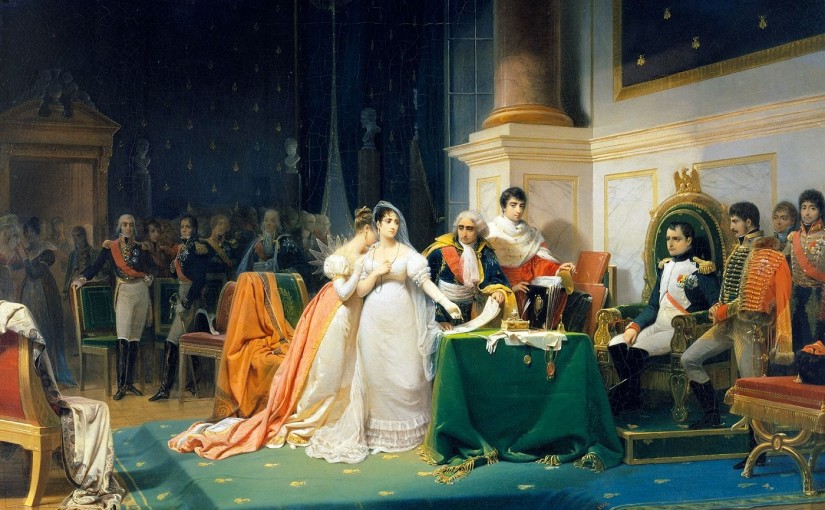فریبِ ہجر وہی ہے، وہی فریبِ وصال
ابھی کہاں تجھے کھویا، ابھی کہاں پایا
– فراق گورکھپوری
Fareb-e-hijr wahi hai, wahi fareb-e-wisaal
abhee kahan tujhe khoya abhee kahan paaya
– Firaq Gorakhpuri
फ़रेब-ए-हिज्र वही है, वही फ़रेब-ए-विसाल
अभी कहाँ तुझे खोया, अभी कहाँ पाया
– फ़िराक़ गोरखपुरी
Meaning of:
fareb, फ़रेब, فریب: धोका, Deceit
hijr, हिज़्र, ہجر: जुदाई, Separation
wisaal, विसाल, وصال: मिलन, Union, Meeting
“Le divorce de l’Impératrice Joséphine 15 décembre 1809 (Henri-Frederic Schopin)” by Henri-Frédéric Schopin – www.allpaintings.org. Licensed under Public Domain via Commons.
Picture:
Joséphine de Beauharnais was the first wife of Napoleon I, and thus the first Empress of the French. (Painting by Henri-Frederic Schopin)
When after a few years it became clear she could not have a child, Napoléon, while still loving Joséphine, began to think very seriously about the possibility of divorce. The final die was cast when Joséphine’s grandson Napoléon Charles Bonaparte who had been declared Napoléon’s heir, died of croup in 1807. Napoleon began to create lists of eligible princesses. At dinner on 30 November 1809, he let Joséphine know that—in the interest of France—he must find a wife who could produce an heir.
Joséphine agreed to the divorce so the Emperor could remarry in the hope of having an heir. The divorce ceremony took place on 10 January 1810 and was a grand but solemn social occasion, and each read a statement of devotion to the other.
Source: Wikipedia
